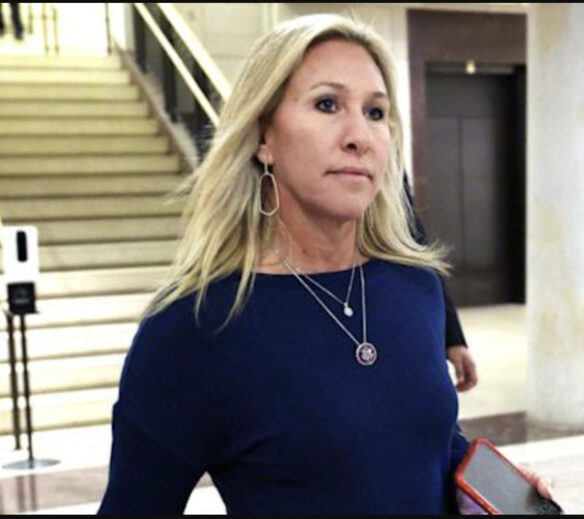The argument is that the Melchezidek Priesthood as well as the Aaronic priesthood existed on the Earth through most of the Old Testament period.
The Prophet Joseph Smith taught that “All the prophets had Melchizedek priesthood.” (Teachings of the Prophet Joseph Smith, p. 181) As D&C 84:17 explains, Melchizedek priesthood is the presiding authority which “continueth in the church of God in all generations.” There can be no church organization or full administration without it. This system held Moses through Malachi. Interestingly, Lehi held Melchizedek priesthood and keys sufficient to lead his family to a promised land with fully functioning temples and no Aaronic or preparatory priesthood. That he, Jeremiah, and Ezekial were quorum associated seems likely.
As to Israel’s backsliding in their demand for a king, the Lord made the best of it. He directed the prophet Samuel to prepare Saul for this office with sacred instruction on the roof of the Seer’s house. The circumstances might suggest to us a priesthood endowment, followed by an anointing the next morning naming Saul as Captain of the Lord’s inheritance, or Israel’s king. The king of the Lord’s inheritance can only be Melchizedek priesthood bearing. (1 Sam. 9:25, 10:1) Immediately Saul is found prophesying among the prophets who also held Melchizedek priesthood. (1 Sam. 10: 5-6, 10-13) Samuel recorded the “manner of the kingdom,” meaning the regulation of a kingdom in which a righteous king is set apart. He must act in concert with a priest and prophet at his side, a triumvirate foreshadowing the Lord’s coming to fill all of these offices. (1 Sam. 10:25)
It is on this wise that David and Solomon came to rule Israel in their turn–holding Melchizedek priesthood. Solomon built the temple David envisioned. Temple construction and implementation is the province of the high priesthood only. Elders and seventies cannot assume this obligation.
As to other witnesses to Melchizedek priesthood activity in Old Covenant times we might cite:
David’s wives were given to him by the prophet Nathan in an eternal marriage covenant (D&C 132: 38-39), that David offered sacrifices as on Araunah’s threshing floor which he did by virtue of Melchizedek Priesthood. (2 Sam. 24:25) That David’s children had their endowments as is shown in the story of Tamar and Amnon. Tamar “rent her garment” in token of a broken temple covenant, the garment being the Hebrew ketoneth passim which is the garment Adam was given when he left Eden. (2 Sam. 13: 19) Solomon’s temple was commissioned, built, and consecrated by the high priesthood, meaning high priests, as elders and seventies cannot head such a work. It would appear that many Israelites who camped about the temple received full blessings there.
The Old Testament prophet Elijah held sealing keys, and governed a school of prophets who had Melchizedek Priesthood. (1 Kings 17:1) We might also recall that the Nephites had Melchizedek Priesthood though they lived the law of Moses. Lehi had this priesthood when the Nephites left Jerusalem as did Ezekiel and Jeremiah who were his fellow servants, possibly members of a Council of Twelve. There was no Aaronic Priesthood utilized in the Book of Mormon (there were no Levites).
In summary, we turn to three masterful statements by Elder Bruce R. McConkie:
Ancient Israel was a nation, a kingdom, and a church all wrapped up in one. Moses in his day was the prophet, seer, and revelator; Aaron was the presiding bishop; the twelve princes of Israel, one heading each of the tribes, held an equivalent status to that of the Twelve whom Jesus chose; and the seventy elders, who with Moses and Aaron saw the Lord, were what we would call the First Quorum of Seventy. There were elders and judges (bishops) and other officers, presiding, as circumstances warranted, over tens and fifties and hundreds and thousands. Israel operated as a theocracy, as a congregation of the Lord’s people, as a church…. [The rebellious] were excommunicated anciently as they are today. (A New Witness for the Articles of Faith, p. 333)
After the days of Moses, the ruling, governing, theocratic power in Israel was the Aaronic Priesthood. But most of the time, if not at all times, there were prophets and seers and congregations of brethren who held the Melchizedek Priesthood, which enabled them to perform celestial marriages. (McConkie, Bruce R., A New Witness for the Articles of Faith, p. 506)
“‘Gather unto me seventy men of the elders of Israel, whom thou knowest to be the elders of the people, and officers over them,’ the Lord commanded Moses, ‘and they shall bear the burden of the people with thee, that thou bear it not thyself alone.’ (Num. 11: 16-17.) Thus was the Lord’s system of government perfected in ancient Israel. Moses served as the prophet, seer, and revelator; at his side were ‘the princes of Israel,’ twelve in number, comparable to the Twelve Apostles, one of whom presided over each of the tribes (Num. 7); then came the Seventy—holy and noble men who also sat in judgment and regulated the affairs of the people. And a millennium and a half later, the Jews still maintained the form of their ancient order; the Great Sanhedrin—either patterned after or descended from the Quorum of Seventy called by Moses….’” (McConkie, Bruce R., Mortal Messiah: From Bethlehem to Calvary, 4:164)
I find the argument convinced. What do you think?

